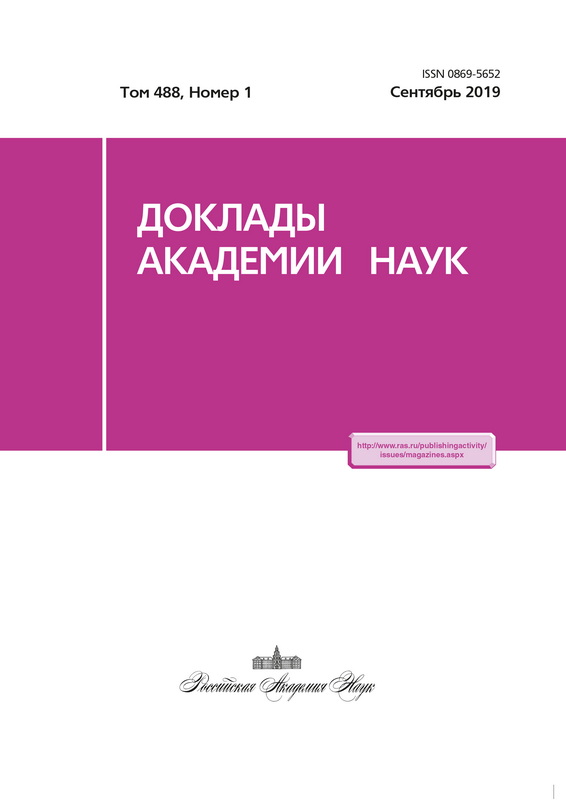Combined irradiation by gamma rays and carbon nuclei increases the C/EBP-β LIP-isoform content in the pituitary gland of rats
- Authors: Anokhina I.P.1, Anokhin P.K.1, Kokhan V.S.2
-
Affiliations:
- V.P. Serbsky Federal Medical Research Centre for Psychiatry and Narcology
- Institute of Biomedical Problems of the Russian Academy of Sciences
- Issue: Vol 488, No 1 (2019)
- Pages: 108-111
- Section: Physiology
- URL: https://journals.eco-vector.com/0869-5652/article/view/16222
- DOI: https://doi.org/10.31857/S0869-56524881108-111
- ID: 16222
Cite item
Abstract
C/EBP-β, a basic leucine zipper transcription factor, has important roles in the regulation of organism’s immune and inflammatory responses. Wistar rats subjected to the combined irradiation were characterized by an increase in the content of C/EBP-β LIP-isoform in the pituitary gland. The obtained data indicate that moderate doses of ionizing radiation to initiate the endoplasmic reticulum stress response and are likely to initiate C/EBP-β-mediated cell death according to the apoptotic scenario. This study also confirms the earlier hypothesis about the alterations of the hypothalamic-pituitary-adrenocortical axis in response to moderate doses of ionizing radiation.
Keywords
About the authors
I. P. Anokhina
V.P. Serbsky Federal Medical Research Centre for Psychiatry and Narcology
Email: viktor_kohan@hotmail.com
Academician of the Russian Academy of Sciences
Russian Federation, 23, Kropotkinskiy, Moscow, 119034P. K. Anokhin
V.P. Serbsky Federal Medical Research Centre for Psychiatry and Narcology
Email: viktor_kohan@hotmail.com
Russian Federation, 23, Kropotkinskiy, Moscow, 119034
V. S. Kokhan
Institute of Biomedical Problems of the Russian Academy of Sciences
Author for correspondence.
Email: viktor_kohan@hotmail.com
Russian Federation, 76А, Khoroshevskoye shosse, Moscow, 123007
References
- Kokhan V.S., Matveeva M.I., Mukhametov, A., Shtem- berg A.S. // Neurosc. Biobehav. Rev. 2016. V. 71. Р. 621-632.
- Kokhan V.S., Shakhbazian E.V., Markova N.A. // Behav. Brain Res. 2019. V. 362. P. 311-318.
- Elsayed S.A., Bhimji S.S. // Physiology, Pituitary Gland, Treasure Island (FL): StatPearls Publishing, 2019.
- Musumeci G., Castorina S., Castrogiovanni P., Loreto C., Leonardi R., Aiello F.C., Magro G., Imbesi R. // Acta Histochem. 2015. V. 117. № 4/5. P. 355-366.
- Li Y., Bevilacqua E., Chiribau C.B., Majumder M., Wang C., Croniger C.M., Snider M.D., Johnson P.F., Hatzoglou M. // J. Biol. Chem. 2008. V. 283. № 33. P. 22443-22456.
- Calkhoven C.F., Muller C., Leutz A. // Genes Dev. 2000. V. 14. № 15. P. 1920-1932.
- Wethmar K., Smink J.J., Leutz A. // Bioessays. 2010. V. 32. № 10. P. 885-893.
- Timchenko N., Wang A.G. L., Timchenko L.T. // J. Biol. Chem. 2005. V. 280. № 21. P. 20 549-20 557.
- Zhang K., Kaufman R.J. // Neurology. 2006. V. 66. № 2. Suppl 1. P. 102-109.
- Fan Y., Liu Z., Weinstein P.R., Fike J.R., Liu J. // Eur. J. Neurosci. 2007. V. 25. № 1. P. 38-46.
- Haddad L., Evans J.C., Gharani N., Robertson C., Rush K., Wiltshire S., Frayling T.M., Wilkin T.J., Demaine A., Millward A., Hattersley A.T., Conway G., Cox N.J., Bell G.I., Franks S., McCarthy M.I. // J. Clin. Endocrinol. Metab. 2002. V. 87. № 6. P. 2606-2610.
- Sun H., Sheveleva E., Xu B., Inoue H., Bowden T.G., Chen Q.M. // Am. J. Physiol. Cell. Physiol. 2008. V. 295. № 4. P. 915-922.
Supplementary files







